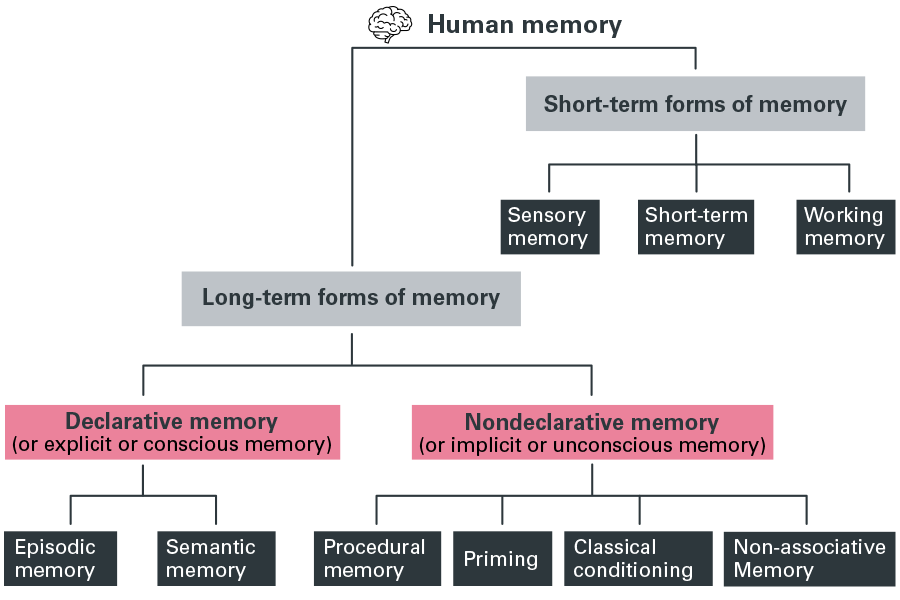INTRODUCTION
1.2
Overview of the human memory systems
What is the architecture of human memory? Read this article by Dominique de Quervain.
Human memory can be categorized into several forms of memory depending on whether it is short term or long term and whether it is conscious or unconscious. In later chapters you will learn that these different forms of memory also depend on different brain structures.
Figure 1 gives you an overview of the human memory systems; below you will find definitions and explanations of the terms.

Figure 1: Overview of memory systems. Copyright: Dominique de Quervain.
-
Sensory memory: A short-term form of memory that allows you to retain sensory information for a second or less after the stimulus has ceased.
-
Short-term memory: In contrast to sensory memory, short-term memory allows you to retain information for several seconds to a few minutes.
-
Working memory: Involves mental processing of information kept in short-term memory. For example when you mentally calculate numbers that you are holding in short-term memory.
-
Episodic memory: A conscious long-term form of memory that allows you to recall experiences along with the spatial and temporal context. For example when you recall what you did last night.
-
Semantic memory: A conscious long-term form of memory that allows you to recall facts without recalling the spatial and temporal context of the learning experience. For example when you know that the person on a picture depicting Marilyn Monroe is Marilyn Monroe.
-
Procedural memory: Unconsciously learned skills (both motor and cognitive), such as playing tennis or driving a car.
-
Priming: An unconscious form of memory, whereby exposure to a certain stimulus affects the response to a subsequent stimulus. For example becoming faster at naming what is on a picture after you have seen the picture before.
-
Classical conditioning: An unconscious associative long-term form of learning and memory, whereby a certain biologically salient stimulus (e.g. food) is paired with a previously neutral stimulus (e.g. bell). After successful conditioning, the previously neutral stimulus will elicit a response that is similar to the one elicited by the biologically salient stimulus.
-
Non-associative memory: Habituation and sensitization are two examples of non-associative forms of learning and memory. Habituation is a response to a stimulus that decreases after repeatedly presenting that stimulus. For example, if an old clock is ticking loudly, you cease hearing the ticking after a while. Sensitization is an increased response to a stimulus after experiencing a harmful stimulus. For example, if you experience painful drilling at the dentist, you then react more strongly, even if the treatment is gentle.
You will learn more about these forms of memory in the following chapters.
Lizenz
University of Basel
